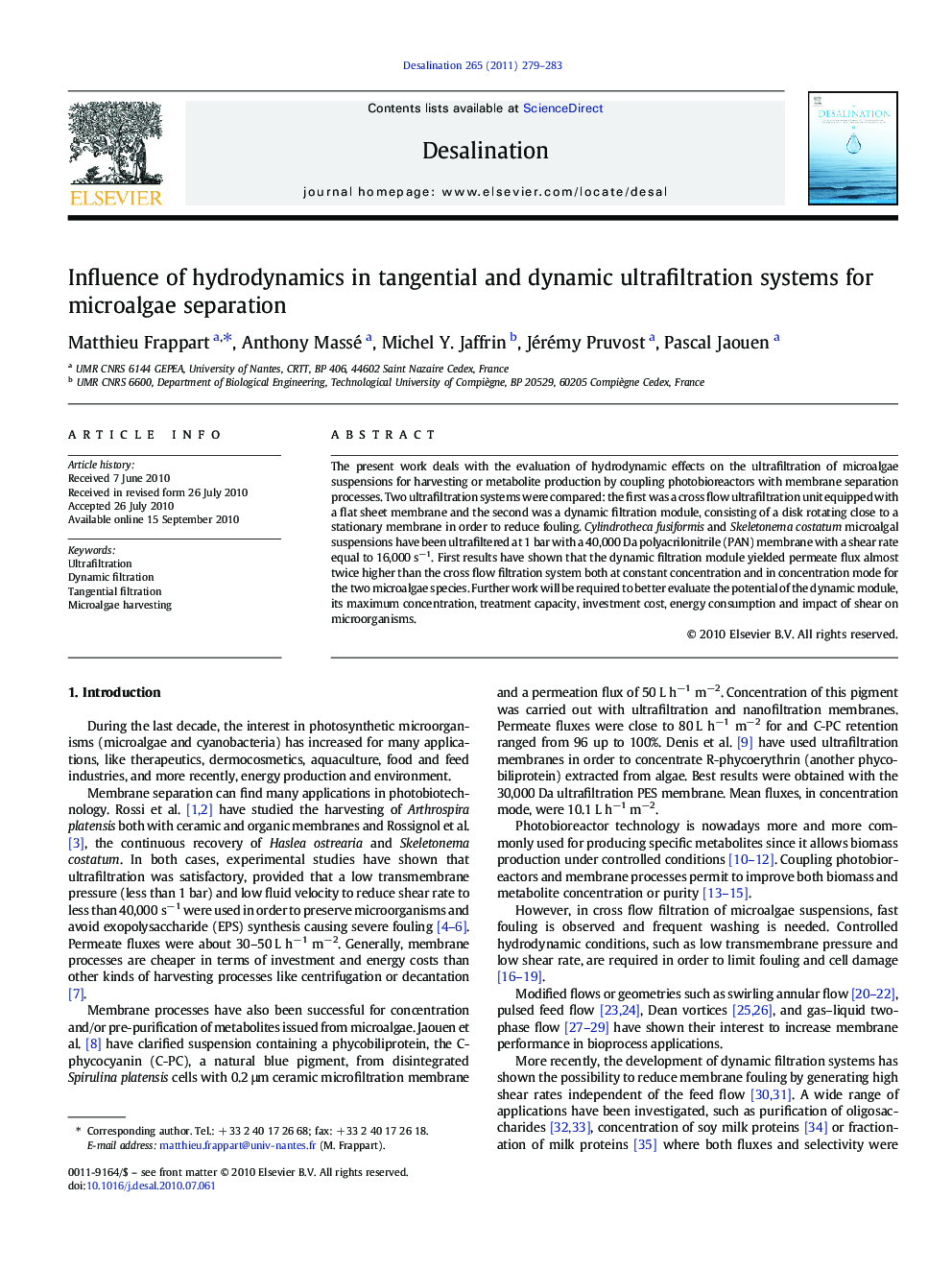| Article ID | Journal | Published Year | Pages | File Type |
|---|---|---|---|---|
| 625392 | Desalination | 2011 | 5 Pages |
The present work deals with the evaluation of hydrodynamic effects on the ultrafiltration of microalgae suspensions for harvesting or metabolite production by coupling photobioreactors with membrane separation processes. Two ultrafiltration systems were compared: the first was a cross flow ultrafiltration unit equipped with a flat sheet membrane and the second was a dynamic filtration module, consisting of a disk rotating close to a stationary membrane in order to reduce fouling. Cylindrotheca fusiformis and Skeletonema costatum microalgal suspensions have been ultrafiltered at 1 bar with a 40,000 Da polyacrilonitrile (PAN) membrane with a shear rate equal to 16,000 s−1. First results have shown that the dynamic filtration module yielded permeate flux almost twice higher than the cross flow filtration system both at constant concentration and in concentration mode for the two microalgae species. Further work will be required to better evaluate the potential of the dynamic module, its maximum concentration, treatment capacity, investment cost, energy consumption and impact of shear on microorganisms.
Research highlights►At VRR=1, dynamic filtration seems to provide better performance than tangential filtration under the same operating conditions. ► In concentration mode, at VRR=3, the permeate flux of the dynamic filtration module is higher than that of tangential filtration system. ► Even if cell integrity seems compromised in dynamic filtration, the phenomenon seems of moderate importance and does not affect the global quality of biomass, and filtration performance.
